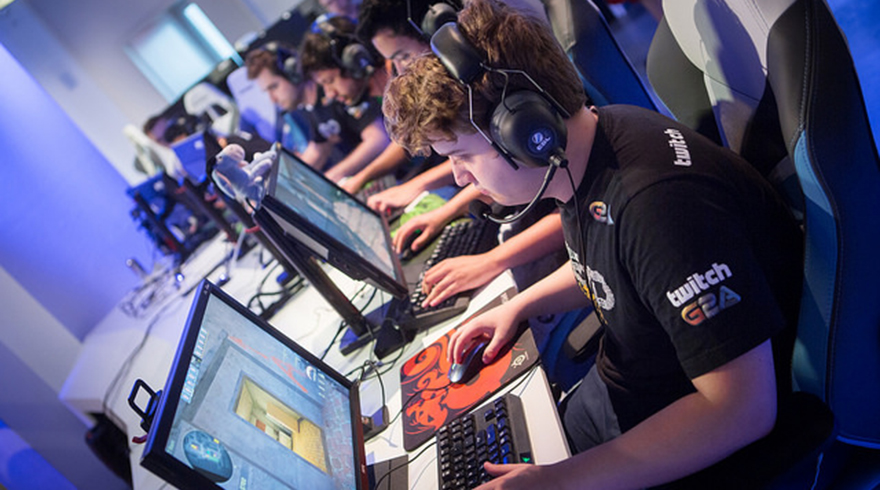The second leg of the Intel Extreme Masters (IEM) tournament just got underway in Cologne, which means that right now someone probably has a big headache. While it may seem that getting people together to play video games would be easy, it is anything but. Esporting events are huge, and they are extremely complicated to boot. There is a massive amount of technology in play—from the games to the hardware to the streaming broadcasts—and keeping these moving parts in synch is a tremendous endeavor.
This was the big takeaway of All Work All Play, the feature-length documentary on last year’s IEM championships, which somehow managed to keep pace with an increasingly exhausted-looking Michal Blicharz. “This is an extremely stressful occupation, with the amount of traveling, and with the amount of elements that are involved with every single event,” the 35-year old director of the Electronic Sports League told me. “Every time you come into a new venue, you have two days or one-and-half days to build an entire tournament from the ground up, including network, PCs and everything.”

The payoff—a hundred thousand screaming fans at the finals in Katowice—is worth it, of course, but getting there is fraught with stressors and difficulty. As the tour snakes its way across three continents, it makes stops in some major cities, who despite their international prestige, might not be prepared for the technological needs of esports.
“Typically people come in, hook up some rudimentary internet, throw up some laptops, and let people play. Boom, that’s the experience. We are way more sophisticated than that,” Blicharz said, taking a swipe at rival leagues. Contrarily, IEM comes to town with 80 God-tier computer stations, a platoon of production crew and IT people, and, depending on which games are featured in the lineup, debuggers and technical experts from game developers like Blizzard, Riot, and Valve.
The organizers have to be prepared for anything, from a computer crash to their internet connection faltering. The man in charge of smooth operations behind the scenes is Bastian Veiser, who divides his duties into the “creative part” of choosing the selection of games for the events, and the “technical part,” which is making sure an auditorium of people and electronics hums like a well-oiled machine.

One concern is uniformity, or verifying that playing conditions are equal for all players in a match, since it would be an unfair advantage for one team to get lightning fast computers while the other is stuck with the spinning hourglass. This starts with installing identical hardware on all computers in the arena, including those used by the referees and elsewhere, Veiser said. Additionally, when they first set up an event, they create a master image of a single hard drive and copy it onto every computer, so that every single bit is the same.
This level of attention to evenhandedness even extends to the length of ethernet cable that connects players to the game. Both teams in a match will sit symmetrically in a row of computers, so that there is no speed advantage for being positioned very slightly closer to the local router. This might sound like overkill, something that no one would notice, but these players are so good that a few milliseconds could be the difference between a win and a loss.

Another anxiety Blicharz and Veiser must take into consideration is disaster management. What do they do if all of a sudden a computer fails during a match? “Very rarely computers have shut down on us,” Veiser said, but even once is a problem due to the fact they are running a live show with millions of people watching.
But fear not. When the occasional malfunction occurs, the operations team is prepared to swap out the whole unit on the spot, like a pit crew replacing a balding wheel. So that the servers of the games they are playing do not go down for maintenance in the middle of a big match, they synchronize with the game developers, since these are online games. If the internet goes out—well, they can pray.
